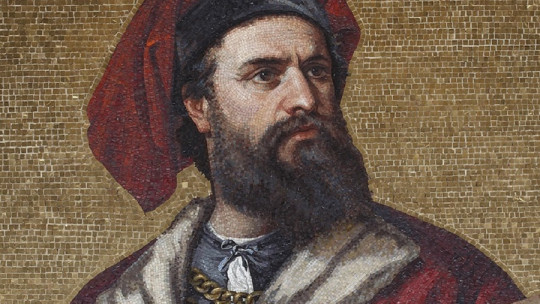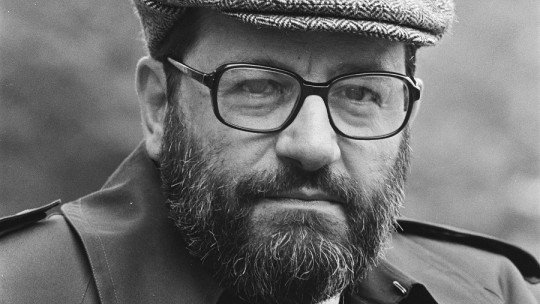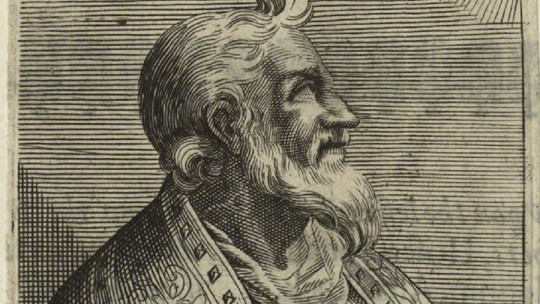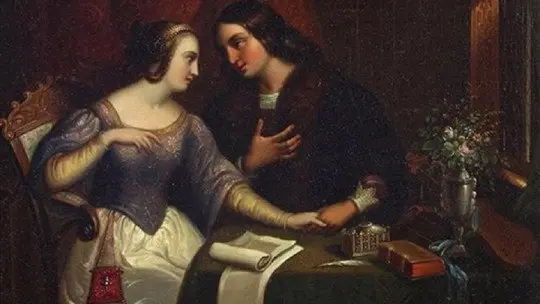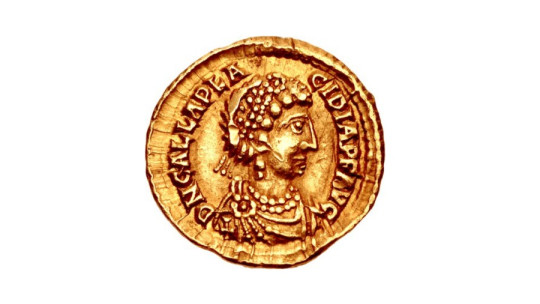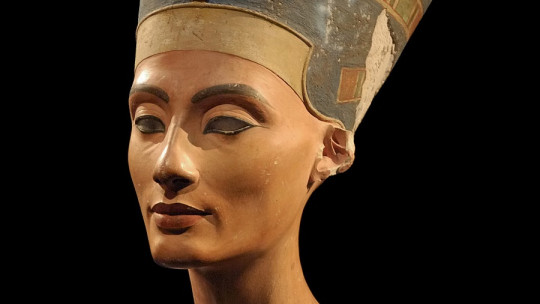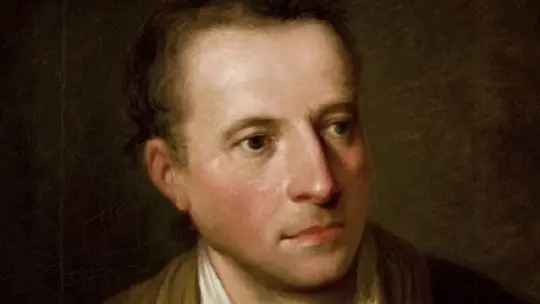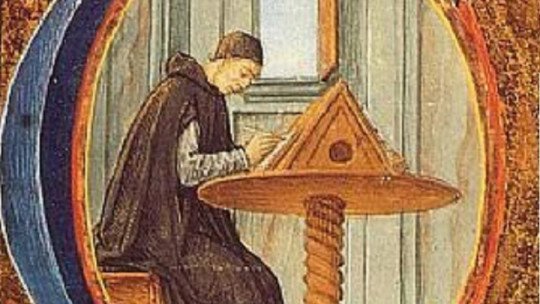
Beato de Liébana lived in very turbulent years. It was the 8th century and, while in the rest of Hispania the Muslim invaders subjugated the old Visigoth kingdom, the Liébana valley, a quiet enclave of what is now Cantabria, experienced a notable cultural splendor, in which monasteries multiplied and, therefore, therefore, the production of codices and the transmission of knowledge.
The “dark” first medieval centuries have gone down in history as a turbulent period lacking cultural activity. However, more and more historians are convinced that this was not the case at all. The Liébana valley, protected by its own orography, well nourished by the rich crops fostered by its mild climate and, above all, spurred on by cultural activity by the growing number of monasteries, is testimony that that 8th century was not so “ dark” as it was once believed.
It is in this context when he comes into the world Beato de Liébana, a character of unclear origin of whom we preserve, however, part of his abundant correspondence with great personalities of the time, such as Alcuin of York, advisor to Charlemagne, and Elipando, metropolitan of Toledo, with whom, however, he would later establish a violent enmity.
Brief biography of Beato de Liébana, the monk who commented on the Apocalypse
Beyond the fact that he was a native of Liébana and that he was a priest and abbot of a monastery dedicated to Saint Martin (the future Saint Toribio of Liébana), we know little or nothing with certainty about our character. His date of birth must be around the year 730, when the first of the Alfonsos, son-in-law of Pelayo, the Asturian leader, reigned in the Asturian area.
Absolutely everything about his childhood and early youth is unknown. The next reliable information we have is that, in the year 776, and already as a monk, he finished what would be the first version of his Commentary on the Apocalypse a text that would have wide circulation in the Western Christian world of the Middle Ages.
The abundant and rich valley of Liébana
We have already commented on the importance of the Liébana Valley enclave in the Hispanic context of the time. Located in the western part of current Cantabria, its location, sheltered from the harshest climates of the surrounding regions, allowed for a mild climate that made possible a significant cultivation of vineyards, cereals and fruit trees. This abundance gave rise to the proliferation of monasteries, spread throughout the valley, which were fundamental enclaves for the production and expansion of knowledge.
We have evidence of several monasteries in Beato’s time: in addition to Santo Toribio de Liébana, the monastery where he was abbot (called San Martín de Turieno in those years), there were other important monasteries such as San Salvador de Osina, San Salvador de Vileña and Santa María de Cosgaya. The latter, by the way, and following the tradition of post-Visigothic Hispania, was dual, that is, it had a female and male community.
Let us remember that We are in a world before the Gregorian reform in which the coexistence of monks and nuns was not surprising at all. In fact, it was common to see them working together in the making of codices, as was the case of the nun Ende and the monk Emeterio. Ende was, incidentally, the illuminator or one of the illuminators of the famous Blessed of Girona.
Blessed of Liébana, the first blessed
We take advantage of the mention of the Blessed of Girona to define exactly what we call blessed. The blessed ones are comments on the Apocalypse based on the commentary that Beatus of Liébana made in the 8th century (hence the name). The work was so successful that it spread throughout Western Europe and prompted other monasteries to copy its text and images.
It must be taken into account that the word copyin the Middle Ages, did not have the pejorative value that we apply to it today. To begin with, there was nothing wrong with copying the works of others; On the contrary, it was necessary, because let us remember that the printing press did not yet exist and that the only way to disseminate knowledge was by manually copying the codices. On the other hand, each copyist added his own imagination (and even additional text) to the copy in question, so there is no blessed one that is strictly identical to the original of the monk of Liébana.
Beatus of Liébana wrote the most famous commentary on the Apocalypse, but it was neither the only nor the first. This enigmatic book, supposedly written by the apostle John during his exile on the island of Patmos, gathered a lot of controversy around it until it was officially admitted to the canonical corpus of the Bible at the Council of Toledo in the year 633. In this way, The vision of Saint John became obligatory in the Hispanic liturgy, with the penalty of excommunication for anyone who did not read it.
But Not in all places did the Apocalypse have the same acceptance. In the eastern part of Christendom it was never seen favorably, as it was considered highly “suspicious”, and it was not officially admitted until the 14th century. In any case, the comments made previously (by Victorinus of Pettau and Saint Jerome, on the one hand, and by Tyconius and Saint Augustine on the other) were an invaluable source for, centuries later, Beatus of Liébana to compose his own commentary. he.
“Testicle of the Antichrist”
Perhaps the best known thing in the life of Beatus of Liébana was the fierce enmity he had with Elipando, metropolitan of Toledo (717- h. 808). To understand this fierce fight, we must put ourselves in the context. Elipandus was a supporter of a current of Christianity that promulgated that Christ was the son of God, but only adopted. This evidently clashed with the official dogma, upheld by Charlemagne’s empire and by personalities such as Beatus, in close contact with the Carolingian court.
In one of his texts, the monk from Liébana even called Elipando “testicle of the Antichrist”, alluding to his heretical beliefs. But The metropolitan of Toledo did not fall short, since he said of Beato that he was a morbid ovis (i.e., a “mangy sheep”). From all this we can deduce that, despite being two important personalities in the culture of the moment, the two characters did not hesitate to let themselves be carried away by anger…
Elipando went further and accused Beato of being a regular client of brothels. We cannot know if this was true, although there are doubts about the veracity of the accusation, since it is evident that the metropolitan of Toledo, in his exaltation against the monk of Liébana, could have said anything to denigrate him in the eyes of everyone. In short, a testimony that historical figures continue to be, above all, human beings.
Blessed and the beginning of the cult of Santiago
In 783, Mauregato, a bastard of Alfonso I, was crowned Asturian king, to the detriment of the rights of the legitimate heir, the future Alfonso II.
We know that Beato de Liébana attends the admission of Adosinda, widow of King Silo and supporter of the young Alfonso, into a monastery, a fact that definitively removes her from political life.
It is very possible that this is an indicator that Beato was positioning himself in favor of Mauregato, as his famous poetic hymn also attests. O dei verbumdedicated to this monarch and where, for the first time, Santiago the Apostle is mentioned as the patron saint of Hispania, since he is cited as the shining golden head of Hispania…
Curiously, shortly after the composition of the anthem, already in the time of Alfonso II (who finally acceded to the throne that rightfully belonged to him) The supposed tomb of the apostle was discovered in Compostela, of which the king was, by the way, the first pilgrim. A dazzling ascent of the Camino began as one of the medieval pilgrimages par excellence. Beato de Liébana, of course, had played a crucial role in the composition of the legend of the Hispanic patron saint.
World’s End?
One of the taunts that Elipando directed at Beato was related, precisely, to the belief that the monk of Liébana had in the second coming of Christ. According to his calculations (and according to a fairly widespread trend at the time), If the Creation was destined to last 6,000 years and, with the arrival of Christ, it had already lasted 5,200, there were only eight centuries left for his second advent and, therefore, for the end of the world.
It seems that Beato survived the fateful date, so he was able to verify that the calculations were wrong. However, the year of his death is not known with certainty. Historians believe that he died a few years later, perhaps around 810. In any case, and despite the current difficulties in unraveling his life, what is clear is, in light of the profuse correspondence he maintained and the intellectual discourses in the who participated, and as the art historian Joaquín Yarza Luaces (1936-2016) states, that Beato de Liébana was not that monk locked up in his Cantabrian valleys, but rather represents a fundamental figure for understanding the Hispanic 8th century.

